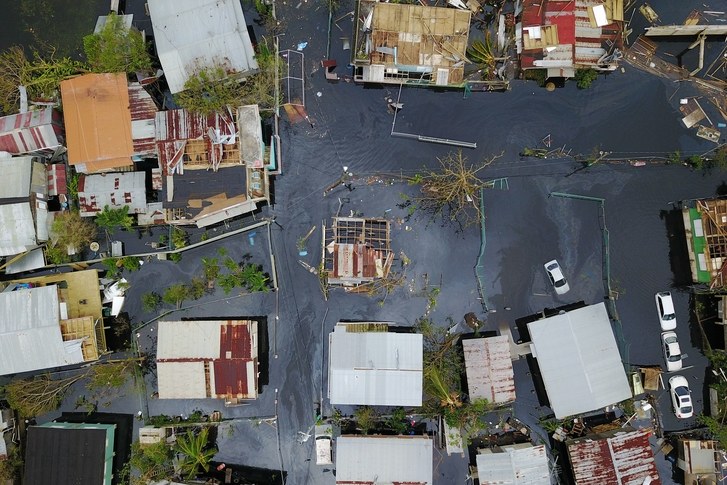
By: Savi Raghuraman | News Editor
October 3, 2018
Thursday, September 20 marked the one-year anniversary of Hurricane Maria’s landfall in Puerto Rico. For most people of the island, though, this day was just one of a series of days filled with reminders of the catastrophic storm. Locals still wake up each day to the ruins Maria left behind.
Hurricane Maria, a category 4 storm when it hit Puerto Rico, now stands as one of the deadliest disasters in U.S. history. Initially, the federal government estimated the death toll to be 64, a statistic thrown out constantly by a gloating President Trump. However, a recent, in-depth study by George Washington University commissioned by the Puerto Rican government revised the casualties to 2,975 deaths, which exceeds the deaths from other hurricanes in 2017 and Hurricane Katrina in 2005. In fact, this ranks Hurricane Maria as the deadliest American natural disaster since Hurricane Galveston, which hit Texas in the year 1900.
Exacerbating the ferocity of the hurricane, the federal response was slower than with other storms. One year later, 45,000 homes are still waiting for the government to fix their roofs, and about 40 percent of the population is below the poverty line, suffering from the significant portion of small businesses and manufacturing companies that have closed down since the hurricane. The conditions have prompted a mass exodus: 200,000 people have migrated elsewhere, and ten percent of the island’s current population is projected to follow suit in the next five years.
The Federal Emergency Management Agency (FEMA) had Houston up and running again months after Hurricane Harvey, and just weeks before Maria, had started doing the same for Florida after Hurricane Irma. Why was the FEMA response so ineffective in Puerto Rico, then? Part of the answer is already existing economic issues. Before the storm, the territory’s government was already in deep debt, and its population was shrinking, albeit at a much slower rate than now. Because the average income was lower than in the States and the poverty rate higher, less people had the financial resources to coordinate with FEMA aid to actually get repairs started. Clearly, though, the Trump administration shares much of the blame, for not trying to fully understand the territory in order to help them.
“I remember hearing Trump saying that we did the best job with Puerto Rico,” senior Margaux Ranson said. “But I feel like there’s still so much damage that we obviously didn’t do the best we could.”
FEMA’s own report shows that the average wait time for repairs to begin was a lengthy 39 days, just because inspectors were not accustomed to operating in these types of communities, where many homes lack formal addresses. Plus, the median amount FEMA granted to homeowners was $1,800, a meager sum compared to the $9,127 median granted to homeowners in Texas after Hurricane Harvey. A significant portion of homeowners, who had family members pass down their homes to them, were denied aid because they couldn’t show official titles to the property. Although it has made progress in the last year, the FEMA system was clearly not designed to work in such conditions, and officials at all levels haven’t demonstrated the flexibility the situation asked of them.
Nonetheless, Trump and his administration continue to tout their pride of their work in Puerto Rico. Americans are not having it, though, and see it as just another instance of Trump’s incompetence, including senior Rhiannon Yanda.
“Trump didn’t know how to handle the situation,” Yanda said. “He left Puerto Rico in ruins.”
Regardless of politics, Puerto Ricans continue to struggle every day, trying to glue the broken pieces of their society back together. Their numbers may be shrinking, but we must keep their story alive.

Leave a Reply